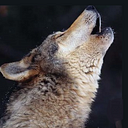“It spread because it was disruptive — I’ve already quoted to you several studies on this and explained why that was the case.”
Profound change is generally associated with disruption. You described earlier how efforts to introduce partnership structures to businesses led to people leaving those businesses.
I read the New Science article to which you refer. Scientists Julian Steward, Leslie White, and Robert Carneiro attribute the emergence of agriculture to population growth.
Ian Morris attributed population growth to the emergence of agriculture. Morris makes more sense to me since he described the process through which agriculture emerged. Steward, White, and Carneiro explained neither the cause of the population growth nor the process through which the practice of agriculture was established.
The discrepancy between Morris and Steward/White/Carneiro suggests that not all anthropologists agree.
As one of your commenters noted, patriarchy arose independently in pre-Columian Mesoamerica and China. It did not spread to those areas from other locations. White and Carneiro may be right about the disruption inherent to the practice of agriculture, but that does not appear to be the sole cause of its proliferation.
“Greater equality of wealth, of power and of prestige has been achieved in certain hunting and gathering socletles…”
Certain hunting and gathering societies? Not all of them?
While many hunting and gathering bands may indeed have been strictly egalitarian, that may not apply to all of them. This article describes hunting and gathering communities that were not necessarily egalitarian. Sedentary and stratified foraging communities may have been more common than you realize.
As David Graeber and David Wengrow explain it:
“…it’s bizarre to imagine that, say, during the roughly 10,000 (some would say more like 20,000) years in which people painted on the walls of Altamira, no one — not only in Altamira, but anywhere on earth — experimented with alternative forms of social organization…”
{“The Dawn of Everything” — page 8}
Are humans naturally ruthless, competitive, selfish, and domineering? Or are they naturally generous, cooperative, and altruistic? They are neither. They are both. Each individual has a potential for benevolent cooperation, in conflict with a potential for selfish competitiveness.
The individual must find an appropriate balance between those competing potentials. The best-suited equilibrium is determined by the conditions and circumstances the individual is experiencing. The resulting balance will vary from person to person.
Under some circumstances, most individuals will lean towards generosity; the population will become egalitarian. Under other conditions, most individuals will become more competitive, and the community will develop as a dominance hierarchy.
Among early proto-humans, those whose potential for cooperation prevailed tended to gain an advantage over the more competitive individuals.
Once homo-sapiens established themselves as the only hominid species, the pressures favoring cooperation abated under some conditions and circumstances. This allowed the more selfish, ruthless, and competitive individuals to prevail where circumstances permitted. Other conditions favored the more cooperative potential.
Dominance hierarchies have always existed. Not all foragers were egalitarian.
